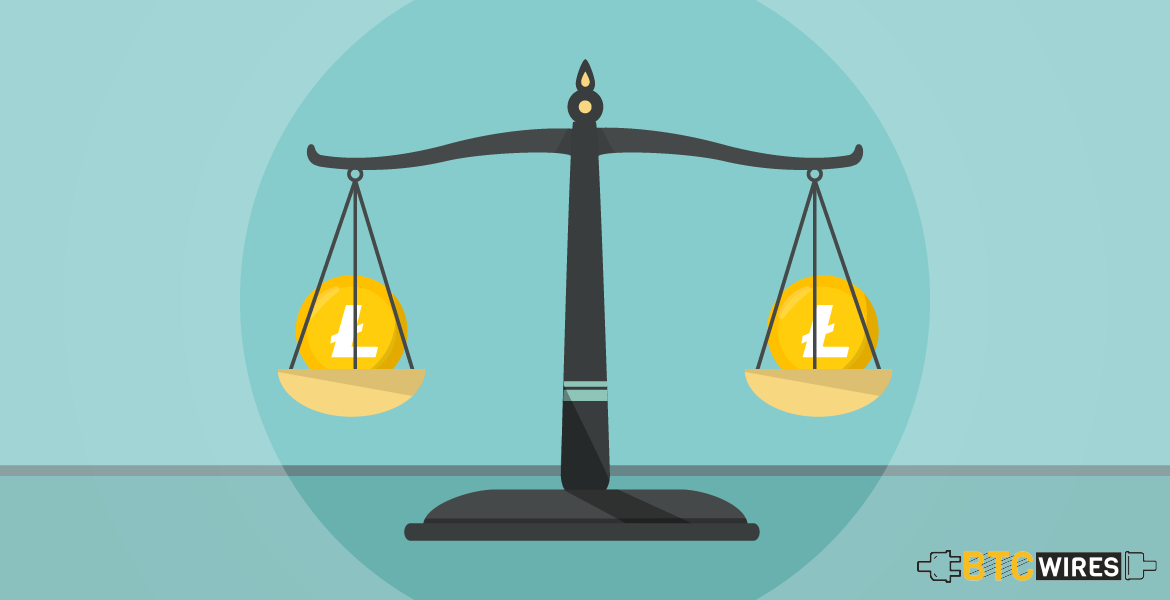Litecoin is among the earliest altcoin which was created back

Litecoin is among the earliest altcoin which was created back in October 2011 to better on some of the limitations of the Bitcoin blockchain. The blockchain is a hard-fork of the original Bitcoin core and a truly decentralized peer-to-peer cashless network.
Litecoin was created by one of the former Google developers Charlie Lee back in 2011 when he was still working for Google. The altcoin promises to be faster with near-zero transaction fee and since its inception, it has been in the list of top 5 cryptocurrencies by market cap.
Litecoin being among the earliest altcoins and based on the original open-source Bitcoin protocol, it draws a direct comparison with the pioneers. Although both the cryptocurrencies work on the principle of distributed ledger technology, still there are certain operation differences between the two.
You May Also Read: Ethereum vs Litecoin – Which Cryptocurrency is Better?
How Litecoin Blockchain is Different From Bitcoin
Bitcoin was launched back in 2009 and was the pioneer or guiding light for the other cryptocurrencies that followed. Similarly, Litecoin even though follows the same decentralization principles have a better block time, which allows for faster transactions. Some of the most significant differences between the two cryptocurrencies have been listed below.
- Faster Transaction Speed: bitcoin has a block time of 10 minutes, which means a transaction sent over the Bitcoin network might take in upwards of 10 minutes to appear in your wallet. On the contrary, Litecoin has a block time of just 2.5 minutes and thus within a couple of time, your transaction gets verified.
- Lower Transaction Fee: one of the major issues with the main Bitcoin network is the high transaction fee, while its counterpart litecoin promises almost negligible transaction fee.
- Better Scalability Options: another major headache for the Bitcoin core team is its scalability issues, where the network proves inefficient in transferring high volumes of transactions simultaneously. Litecoin’s technical advantages make it more efficient and have better scalability solutions.
- Total Supply of coins; bitcoin has a total supply cap of 21 million coins while the litecoin’s supply limit at 84 million, 4X more, and with a block time 4X faster than that of Bitcoin as well.
You May Also Read; What is Litecoin Halving?
How Big is Litecoin Blockchain?
Blockchain Technology as the name suggests is a chain of blocks, where each block on the network consists of a certain number of transactions. You can call blocks as universal ledger where a certain of the transaction are registered which when verified, the blockchain moves to the next block.
We will look at various aspects related to the size of the litecoin blockchain in the following summarized table for a better transaction
- Block time: 2m 29s
- Block Count: 1,579,915
- Block size: 20.045 KBytes
- Blocks in the last 24h; 577
- Blocks avg. per hour (last 24h); 24
- Block Reward: 25 LTC
- Total Litecoins in circulation: 60,497,975
- Total litecoin supply: 84,000,000
- Mining Difficulty: 7,351,251
- Hash-Rate: 214.84 THash/s
- Mining profitability: 2.8529 USD/Day for 1 GHash/s
- Blockchain Size: 21.96 GB
The above table tells us about the various factors associated with the Litecoin Blockchain and its size. The total size of the blockchain is 21.96 GB which would grow as more number of blocks gets mined.
The process of block mining is done by the peers on the network and in return they receive a certain block reward, which is 25 LTC and scheduled for halving on 8th August when it would be 12.5 LTC.
Litecoin is currently among the top cryptocurrency by market capitalization and falls behind Bitcoin, Ethereum, Bitcoin cash, and Ripple.
You May Also Read: Are Bitcoin and Litecoin Same?
Final Thoughts
Litecoin being among the oldest altcoins in the crypto space and still maintains a status quo by being in the top 5, which speaks a volume about the core team behind the network and the whole community. When Litecoin took to the central stage, it promised to improve upon on various aspects which the pioneer Bitcoin failed to address.
Litecoin promises to be a truly decentralized peer-to-peer cashless network with faster transaction speed at negligible transaction fee. The litecoin network also promises better scalability solutions and can manage high transaction volumes on its network without beating a sweat.
Here Are Few Articles For You To Read Next:
